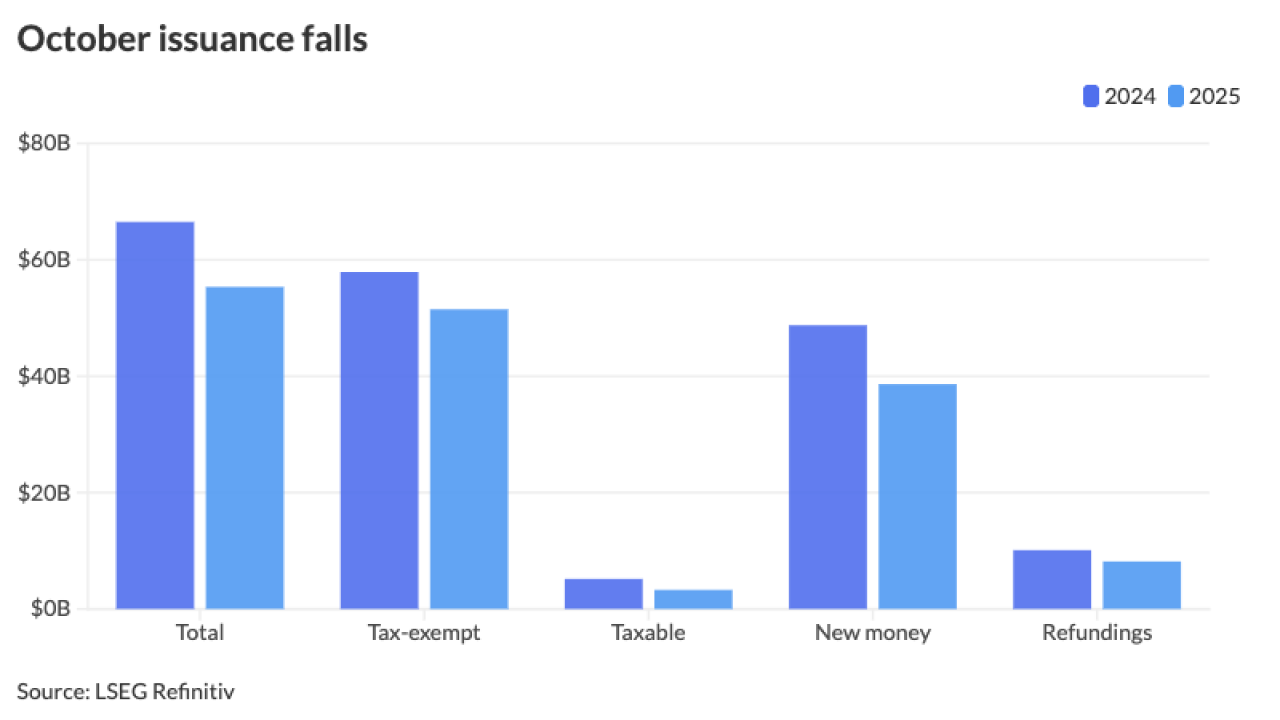
WASHINGTON — Legislation that would extend the Build America Bonds program until April 2013 at gradually reduced subsidy rates was approved by a vote of 246 to 178 in the House yesterday.
The Small Business and Infrastructure Jobs Tax Act of 2010 now advances to the Senate but it is unclear when that chamber will take it up. Senate Finance Committee staff could not be reached for comment.
The bill would extend the BAB program until April 1, 2013, but the current subsidy rate — 35% of interest costs — would be lowered annually to 33% in 2011, 31% in 2012, and 30% in the first three months of 2013.
House Ways and Means Committee chairman Sander Levin, D-Mich., said yesterday during debate on the bill that BABs have been “a vital resource for state and local governments looking to expand infrastructure programs.”
The extension falls short of President Obama’s fiscal 2011 budget request to make the BAB program permanent at a 28% subsidy rate, which the administration contends would be revenue-neutral.
But in a letter sent to Levin on Monday, the National Association of State Treasurers warned that issuers would not continue to use BABs at that rate.
“It was made quite clear by several state treasurers that a precipitous reduction to 28% ... would mean that their states would not issue such bonds if current economic circumstances remain,” wrote James B. Lewis, NAST’s president and New Mexico’s treasurer.
He said the group supports an extension of the program, provided that the subsidy “provides economic benefit to issuers of the bonds.”
However, he emphasized that NAST supports BABs only if they remain a supplemental option to traditional tax-exempt bonds, not if they are to serve as a replacement.
The bill also would allow BABs to be used to refund previously issued BABs.
In other provisions, the bill would double in size the two recovery zone bond programs to $50 billion. The recovery zone economic development and exempt facility bond programs originally were created as part of the American Recovery and Reinvestment Act, with issuers authorized to sell $10 billion and $15 billion of these bonds, respectively, for economically distressed areas.
RZEDBs are effectively “super-BABs,” that allows issuers to receive direct payments from the federal government equal to 45% of their interest costs. RZEFBs are private-activity bonds.
A handful of lawmakers had complained to the Treasury Department that although their districts had some of the highest jobless rates in the nation, they received no recovery zone bond allocations because the formula was based on net job losses, not unemployment.
For a variety of reasons, those districts — which were in California, Arizona and Nevada — saw statistical spikes in both unemployment and employment, resulting in smaller net-job loss figures, possibly due to population increases.
The bill would address this by allocating an additional $10 billion and $15 billion to each of the programs to ensure each local municipality receives an allocation equal to at least its share of national unemployment as of December 2009.
The bill also would extend through 2011 a stimulus provision exempting all new PABs from the alternative minimum tax, including bonds refunding debt sold in and after 2003.
In addition, state and local governments would be able to sell PABs for water and sewer facilities without being limited by state volume caps.
Further, tribal governments would be permitted to issue private-activity bonds for sewage and water supply facilities without being subject to PAB volume caps or the “essential government function” test that normally limits a tribe’s use of tax-exempt financing.





